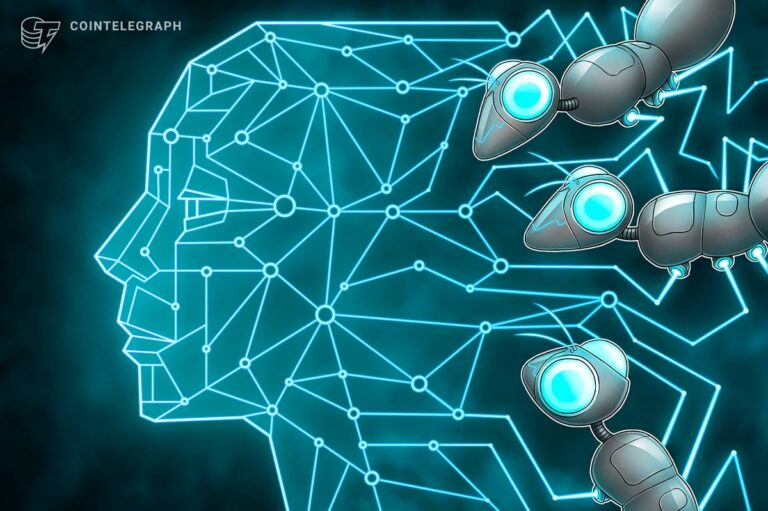
Researchers on the College of Texas at Austin have developed a synthetic intelligence (AI) system able to decoding and reconstructing human ideas.
The scientists just lately revealed an article in Nature Neuroscience wherein they examined using AI to non-invasively translate human ideas into phrases in actual time.
Based on the researchers, present strategies for decoding ideas into phrases are both invasive — that means they require surgical implantation — or restricted in that they “can solely establish stimuli from a small set of phrases or phrases.”
The Austin group circumvented these limitations by coaching a neural community to decode purposeful magnetic resonance imaging (fMRI) indicators from a number of areas of the human mind concurrently.
In conducting this experiment, the researchers had a number of check topics hearken to podcasts for hours whereas an fMRI machine non-invasively recorded their mind exercise. The ensuing information was then used to coach the system on a particular consumer’s thought patterns.
After the exercise, topics had their mind exercise monitored once more whereas listening to podcasts, watching quick movies, and silently imagining telling a narrative. Throughout this a part of the experiment, the AI system was fed the themes’ fMRI information and decoded the indicators in actual time into plain textual content.
Based on a press launch from the College of Texas at Austin, the AI was in a position to get issues proper about 50% of the time. Nevertheless, the outcomes aren’t actual – the researchers designed the AI to convey the overall concepts being thought of, not the precise phrases being thought of.
Fortunately for anybody involved about having their minds infiltrated by AI in opposition to their will, scientists are nicely conscious that that is presently not doable.
The system solely works when educated on a particular consumer’s brainwaves. This makes it ineffective for scanning individuals who haven’t spent hours offering fMRI information. And even when such information had been generated and not using a consumer’s permission, the group finally concludes that each decoding the info and the machine’s means to watch ideas in actual time require energetic participation on the a part of the scanned individual.
Nevertheless, the researchers famous that this will not all the time be the case:
“[O]Our privateness evaluation means that topic cooperation is presently required for each coaching and utilizing the decoder. Nevertheless, future developments may enable decoders to bypass these necessities. As well as, decoder predictions, even when inaccurate with out topic involvement, might be deliberately misinterpreted for malicious functions.”
In associated information, a group of researchers in Saudi Arabia just lately developed a way to enhance precision in diagnosing mind tumors by processing MRI scans by a blockchain-based neural community.
Of their paper, the Saudi researchers present how processing most cancers analysis on a safe, decentralized blockchain can enhance precision and scale back human error.
Associated: What’s immutable, defined
Whereas each of the above experiments are cited as early work of their respective analysis papers, it’s price noting that the expertise utilized in every is widespread.
The AI underlining the experiments carried out by the College of Texas at Austin group is a generative pre-trained transformer (GPT), the identical expertise on which ChatGPT, Bard and comparable giant language fashions are constructed.
And the Saudi Arabian group’s most cancers analysis was carried out utilizing AI educated on Nvidia GTX 1080s, GPUs accessible since 2016.
Realistically, nothing will cease a intelligent developer (with entry to an fMRI machine) from combining the 2 concepts to create an AI system that may learn an individual’s thoughts and report it on the blockchain.
This might result in a “proof-of-thought” paradigm, the place individuals would possibly be capable of mint non-fungible tokens (NFTs) of their ideas, or report immutable books of their emotions and concepts for posterity, authorized functions, or simply with rights.
For instance, the influence of NFT coining ideas on blockchain may have implications for writing texts and patent filings that use blockchain as proof of precisely when a thought or concept was recorded. It may additionally enable outstanding thinkers comparable to Nobel Prize winners or up to date philosophers to codify their concepts into an immutable report – one which might be commodified and function collectible digital belongings.